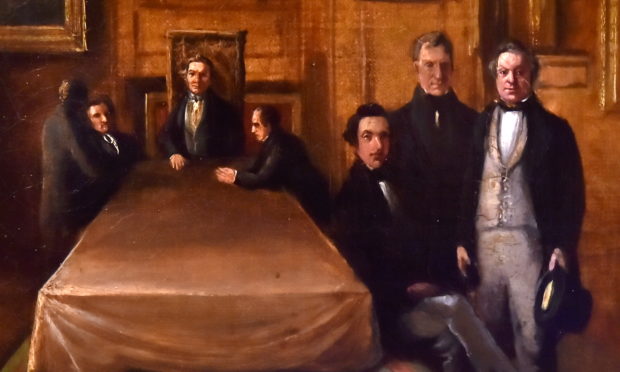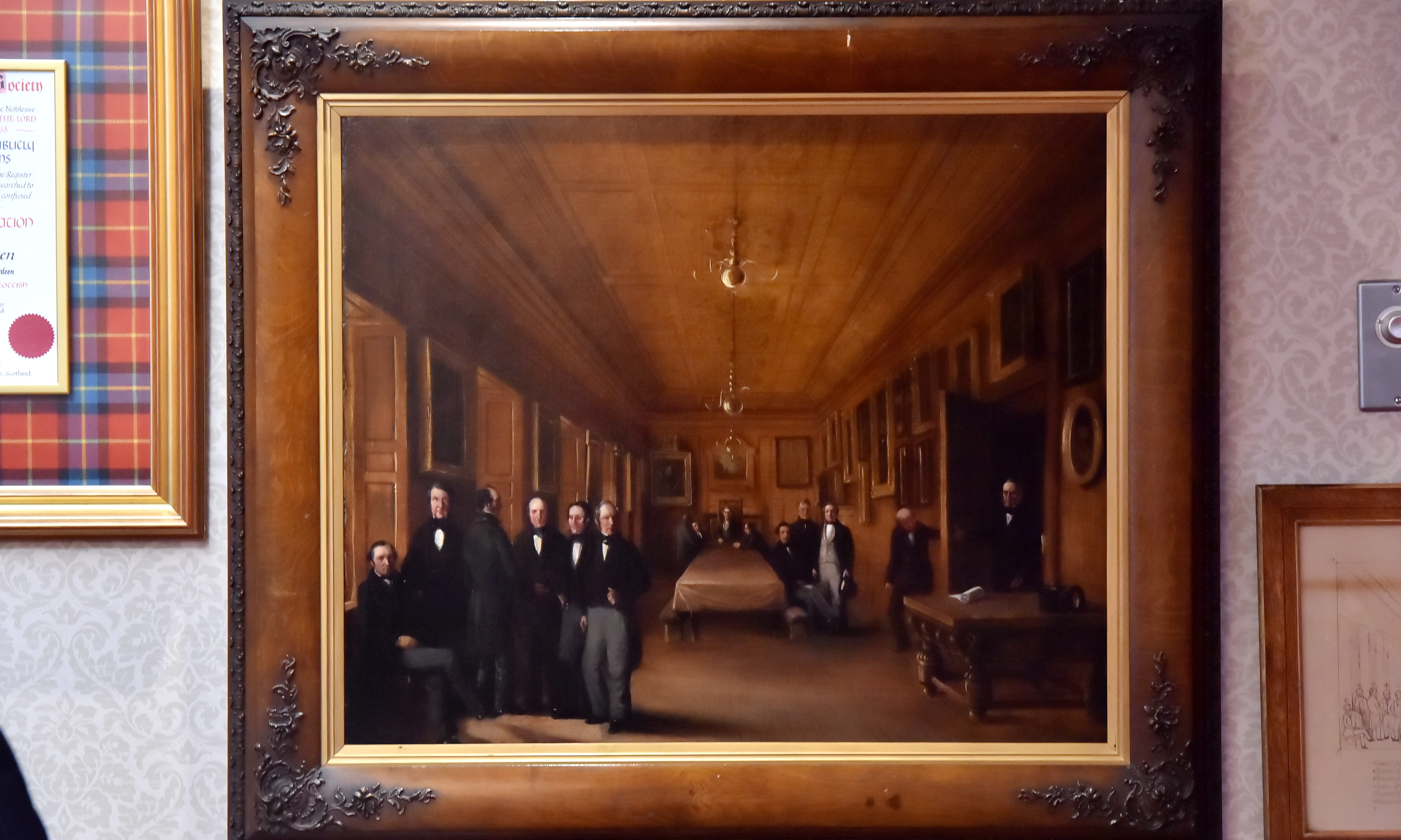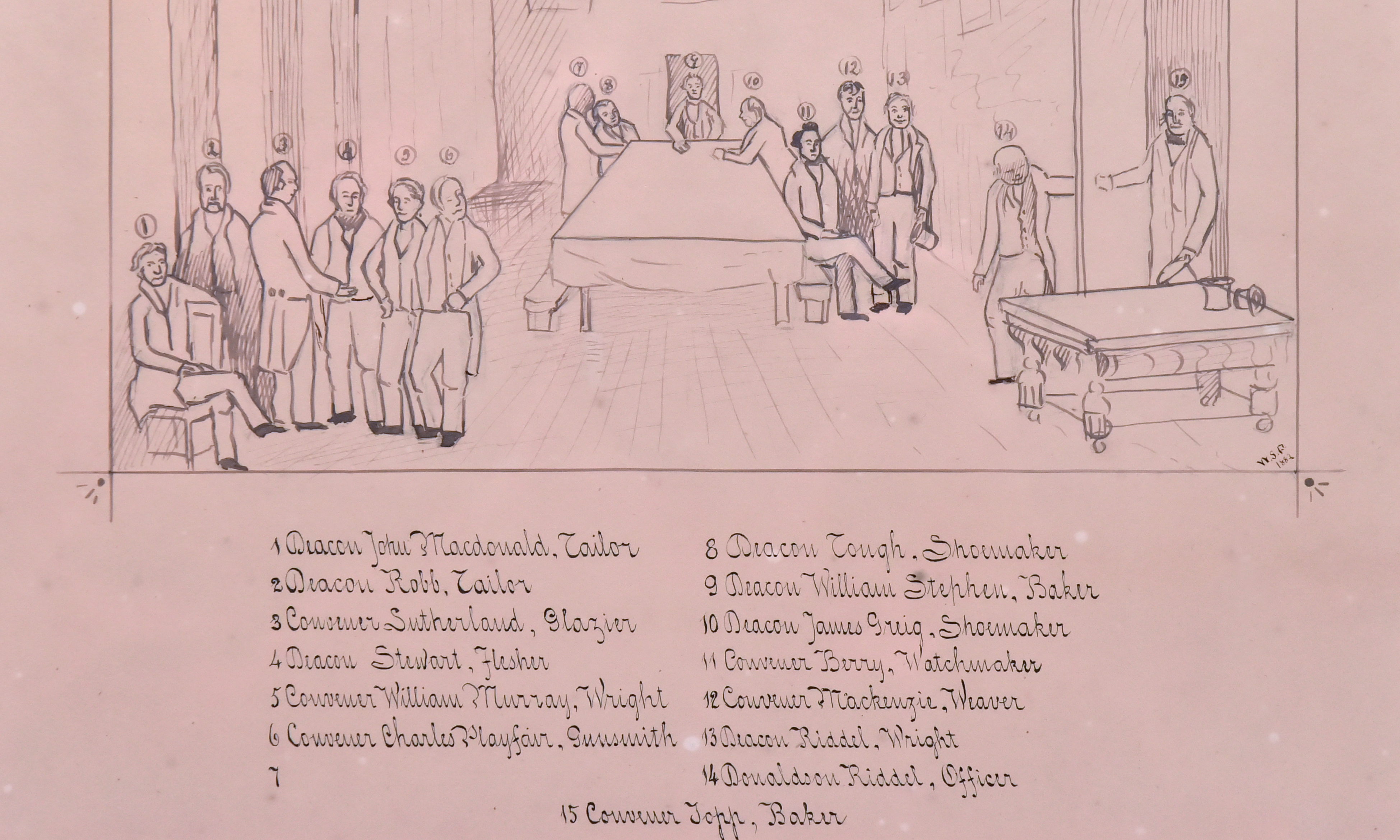Local historians fear they may never be able to unmask a mystery man whose identity has eluded them for decades.
Intrigue surrounds a shadowy figure depicted in a painting hanging in Aberdeen’s historic Seven Incorporated Trades building.
Set in the organisation’s former Union Street premises, the artwork shows 16 men thought to have been involved in its running sitting and standing around a boardroom table.
But while 14 have been identified and named, one man has been painted in shadow.
And 137 years on from when the piece was completed in 1882, the trades’ higher-ups are still none the wiser as to who he may be.
Ex-deacon Tom Ironside said a number of theories have been thought up by past members over the years.
“We think this was probably the committee that was running the place at the time,” he said.
“According to some of the old books, they originally thought that the man who was painted out wasn’t happy with how he had been portrayed.
“But we find that a wee bit difficult because everybody else was quite happy.
“The other was that he did something naughty, and as a result we didn’t want to be associated with him and he was painted out.”
The painting hangs in the essay room of the Seven Incorporated Trades’ premises at Trinity Hall on Holburn Street.
It is surrounded by items including decorative shoes, tapestries and examples of woodwork which aspiring members built to prove their skills as part of the membership process.
Mr Ironside said: “The up-to-date thinking is that these men were all in office at various times.
“So the most likely scenario is that they got together to arrange the painting then paid for it themselves.
“And we think that the man was painted over because didn’t pay his dues, while the others did.”
Mr Ironside said that historians have been able to compile a shortlist of potential suspects, but admitted that they have made their peace with the fact it may remain a mystery for decades yet.
He said: “We have managed to narrow it down to four possibilities, but I don’t think we’ll ever be able to find the actual truth behind it all.”
Aberdeen street names’ historic ties with Seven Incorporated Trades
The Seven Incorporated Trades of Aberdeen can trace its own lineage back as far as the 11th century.
And throughout the city, the history of some of the most distinguished members are remembered – with many streets named after them.
The group’s first, and one of its most notable, patron Rev Dr William Guild was honoured by having both Guild Street and Aberdeen University’s psychology department building named after him.
He became a chaplain to the King, and was minister of the City Kirk from 1631 to 1641.
Dr Guild was perhaps the Incorporated Trades’ greatest benefactor and in gifting the Monastery of the Red Friars of the Holy Trinity, he laid the foundations of the prosperity and continuity of the craft guilds in Aberdeen.
The impact that the members of the Seven Incorporated Trades of Aberdeen has had on the Granite City can be viewed almost anywhere in the city.
Collectively the group owned many areas of the city, with each of the trades each having a unique influence on their own respective areas.
One of the trades, the Hammermen are responsible for all the streets with a precious jewel in their name – such as Golden Square, North Silver Street, Crown Street and Diamond Street.
Meanwhile the Tailors became the developers of the land that today would be more recognisable as Bon Accord Terrace, Bon Accord Square, and East and West Craibstone streets.
The group’s influence throughout the centuries hasn’t be exclusively resigned to the naming of roads however, as the Shoemakers instead took to carving “S” into the stones around Ferryhill.
Ex Deacon Tom Ironside said: “Much of the groups history has grown alongside Aberdeen’s own.
“We are still learning new things all the time, there is currently research being done into all the areas developed by the trades.”
TOMORROW: Seven Incorporated Trades of Aberdeen reveal plans for artefacts centre


